Chinese sesame paste is a flavorful ingredient used in many Chinese dishes.
It’s made from ground toasted sesame seeds, which gives it its nutty flavor and deep color.
But what are the best substitutes for Chinese Sesame Paste? Fortunately, there are a few excellent options that can work as substitutes for Chinese sesame paste. These include peanut butter, tahini, almond butter, miso paste, roasted soybean paste, and even yogurt! All of these ingredients will give your dish an added depth of flavor that makes up for the lack of sesame paste.
If you’re looking for a substitute for this popular ingredient but aren’t sure where to start, then read on!
We’ll be exploring 10 different alternatives to Chinese sesame paste, along with their key features and how to use them.
What Is Chinese Sesame Paste?
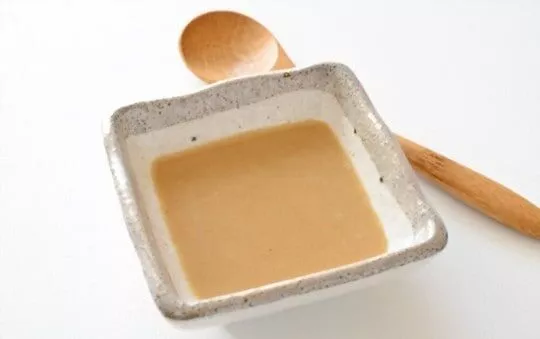
Chinese sesame paste, also known as zhī ma jiàng (芝麻酱), is a thick, richly flavored paste made from toasted white sesame seeds.
It is a staple ingredient in many Chinese dishes, particularly those from the Sichuan and Hunan regions.
The paste is made by grinding toasted sesame seeds into a fine powder, which is then mixed with oil until it forms a smooth, creamy paste.
It has a nutty, smoky flavor and is commonly used as a condiment, marinade, or sauce in a variety of dishes.
Chinese sesame paste is a versatile ingredient that can be used in both sweet and savory dishes.
It is commonly used in noodle dishes, such as Dan Dan noodles and sesame noodles, as well as in sauces for meat and vegetables.
| Name | Chinese Sesame Paste (Zhī Ma Jiàng) |
|---|---|
| Flavor | Nutty, smoky |
| Texture | Thick, creamy |
| Color | Light brown |
| Common Uses | Condiment, marinade, sauce |
| Cuisine | Chinese |
| Region | Sichuan, Hunan |
| Ingredients | Toasted white sesame seeds, oil |
| Substitutes | Tahini, peanut butter, soybean paste, etc. |
The 10 Best Substitutes for Chinese Sesame Paste
If you’re trying to make a Chinese dish with sesame paste and find yourself without the right ingredient, there are several excellent substitutes that can help you achieve the same flavor, texture, and aroma.
Here are ten of the best alternatives:
1 – Tahini
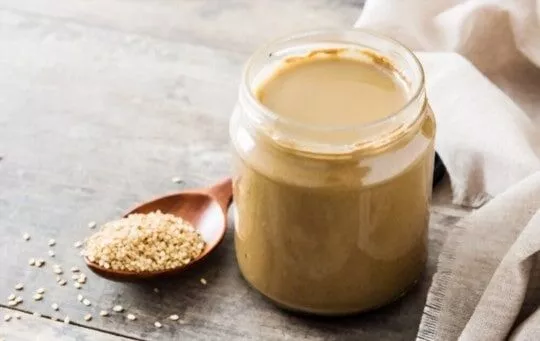
Tahini is a traditional Middle Eastern condiment made from ground sesame seeds.
It offers an earthy, nutty flavor and creamy consistency similar to sesame paste.
To use tahini as a substitute for Chinese sesame paste, simply mix it with a bit of salt and hot water until it becomes smooth and spreadable.
The salt helps to bring out the natural flavors in the tahini, creating a delicious alternative for your Chinese dish without any loss in taste or texture.
2 – Peanut Butter
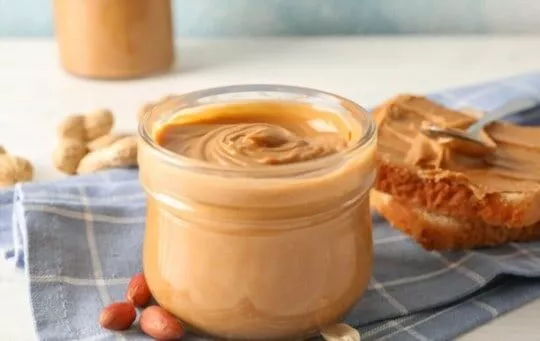
Peanut butter is a staple ingredient found in most pantries across America.
Its deeply roasted flavor profile creates an ideal backdrop for savory dishes.
To substitute peanut butter for Chinese sesame paste, combine it with chicken broth or vegetable oil to create a paste-like consistency.
This combination adds extra protein while helping retain the unique flavors found in sesame paste-based recipes.
3 – Almond Butter
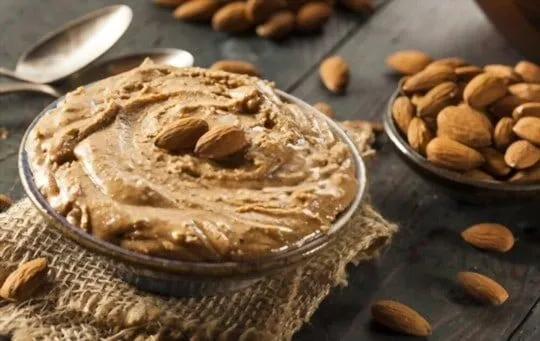
Almonds are one of nature’s most nutrient-dense fruits, providing vast amounts of Vitamin E and antioxidants.
Almond butter offers this same nutritional value while replacing Chinese sesame paste in many dishes.
Use almond butter just like you would tahini: mix it with salt and hot water until a thick, spreadable texture forms.
This creative swap adds subtle sweetness alongside hearty roasted notes that perfectly complement savory recipes like stir-fry or soup.
4 – Sunflower Seed Butter
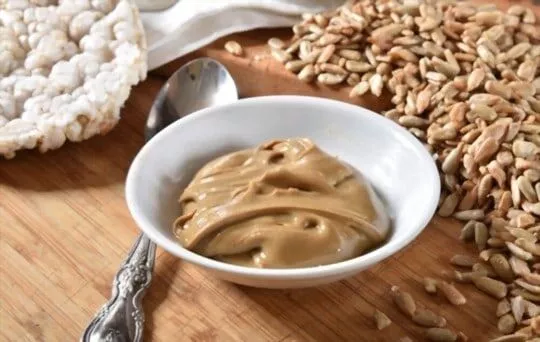
Sunflower seed butter has quickly become one of the most popular non-nut butters on grocery store shelves today thanks to its rich nutrition profile and subtly sweet taste profile.
It contains high levels of vitamins A, B6, C, and copper which can be used to benefit hair growth as well as bone health.
To substitute sunflower seed butter for Chinese sesame paste, combine it with hot water before adding your favorite seasonings such as garlic powder or tamari sauce for an extra burst of flavor in your recipe.
5 – Soybean Paste

Soybean Paste is made from boiled soybeans mashed into a thick puree by adding rice flour or wheat flour during the cooking process until desired consistency is achieved.
It has been used widely as a condiment or a base ingredient in many Asian dishes due to its intense umami flavor profile that can easily enhance any culinary experience when properly applied to your recipe.
To use soybean paste as an alternative to Chinese sesame pastes simply mix it together with some salty broth until it reaches a creamy texture before adding other ingredients as usual.
By using soybean paste instead of sesame pastes you will not only get a more intense depth of flavor but also health benefits due to higher protein content than regular pastes.
6 – Cashew Butter
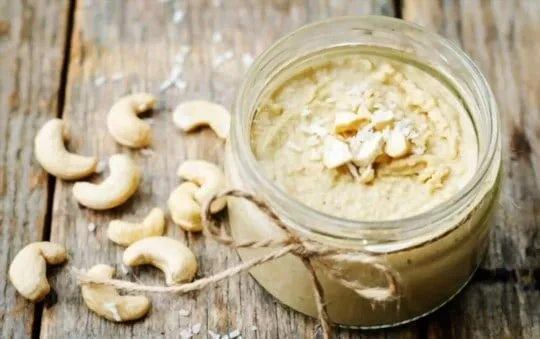
Cashew butter, a creamy and velvety condiment with a subtle sweetness, is an ideal replacement for sesame paste in many dishes.
With its rich taste and smooth texture, cashew butter adds an exotic twist to many recipes.U
se it as a dip or spread in sandwiches or as an accompaniment to other culinary dishes.
Cashew butter also makes an excellent base for sauces and marinades.
Its versatility allows it to be used as a direct substitute for sesame paste in most recipes without compromising any of the traditional flavors.
7 – Walnut Butter

If you’re looking for something a bit heartier than cashew butter but still want the nuttiness associated with sesame paste, walnut butter is a perfect choice.
This delectable spread is made from ground walnuts and has a deep earthy flavor that pairs well with vegetables and grains alike.
Walnut butter can easily replace sesame paste when making soups, salads, or even pastas; it will add savory notes while providing freshness and complexity to any recipe.
8 – Hazelnut Butter

Similar to walnut butter, hazelnut butter has an intense nutty flavor that evokes the same texture found in Chinese sesame paste dishes.
Hazelnuts are highly nutritious and high in antioxidants, making them an excellent addition to any kitchen pantry.
Hazelnut butter can be used as either a spread or as part of salad dressings or sauces; its natural sweetness blends well with savory flavors without overpowering them.
When searching for a tasty alternative to Chinese sesame paste, hazelnut butter is always worth considering.
9 – Pistachio Butter
Pistachios are known for their distinctive green hue and crunchy texture; they also make an excellent substitution for Chinese sesame paste due to their sweet taste and creamy consistency.
Pistachio butter is delicious when spread on toast or stirred into warm drinks like lattes or cappuccinos; its delicate flavor pairs perfectly with milk-based beverages, making it ideal for those who enjoy milder flavors than what’s typically associated with East Asian cuisine.
10 – Macadamia Nut Butter
Another great option, if you’re looking for something sweeter than traditional Chinese flavors, is macadamia nut butter.
Made from ground macadamia nuts, which are native to Australia, macadamia nut butter has a light yet distinctively nutty taste that can complement any dish when used sparingly.
Its silky smooth consistency ensures an enjoyable culinary experience while creating the same non-stick coating similar to Chinese sesame paste dishes, without all of the unhealthy additives often found in aerosol cooking sprays.
Frequently Asked Questions (FAQs)
What can I use instead of sesame seed paste?
There are several substitutes for sesame seed paste, including tahini, peanut butter, almond butter, sunflower seed butter, soybean paste, cashew butter, walnut butter, hazelnut butter, pistachio butter, and macadamia nut butter.
Is Chinese sesame paste the same as tahini?
While both are made from sesame seeds, Chinese sesame paste and tahini are not the same. Chinese sesame paste is made from toasted white sesame seeds and has a thicker, richer texture than tahini, which is made from untoasted sesame seeds.
Can I use sesame oil instead of sesame paste?
No, sesame oil and sesame paste are not interchangeable. Sesame oil is a liquid oil that is made from pressing sesame seeds, while sesame paste is a thick, creamy paste made from ground sesame seeds.
What can I use instead of sesame paste in Dan Dan noodles?
You can use tahini, peanut butter, or soybean paste as a substitute for sesame paste in Dan Dan noodles. Tahini is the closest in flavor and texture to sesame paste and is the most commonly used substitute.
Conclusion
In conclusion, Chinese sesame paste is a flavorful and versatile ingredient that is commonly used in Chinese cuisine.
However, if you can’t find or don’t have access to Chinese sesame paste, there are several great substitutes that you can use.
From tahini to macadamia nut butter, each substitute offers a unique flavor and texture that can be used in a variety of dishes.
So don’t let the absence of Chinese sesame paste hold you back from creating delicious and authentic Chinese dishes.
Experiment with these substitutes and discover new flavors that will enhance your culinary experience.

The 10 Best Substitutes for Chinese Sesame Paste
Ingredients
- Tahini
- Peanut Butter
- Almond Butter
- Sunflower Seed Butter
- Soybean Paste
- Cashew Butter
- Walnut Butter
- Hazelnut Butter
- Pistachio Butter
- Macadamia Nut Butter
Instructions
- Pick your favorite substitute from the list above.
- Follow cooking directions for your selected substitute with the proper ratio of ingredients.
Jenny has always been passionate about cooking, and she uses her platform to share her joy of food with others. Her recipes are easy to follow, and she loves giving tips and tricks to help others create their own unique culinary creations.

